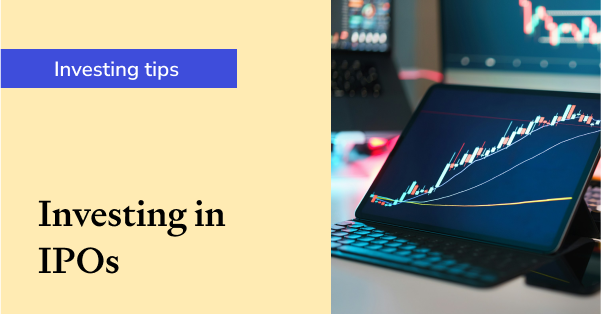What investors need to know about stock splits
A stock split is a corporate action that occurs when a company divides the existing shares of its stock into multiple new shares, resulting in a new share price and investors owning more shares relative to the ratio of the split. While the number of outstanding shares in the market increases, as well as the price per share, the company’s market capitalisation remains the same.
If a company you invest in is considering a stock split, now is the time to consider the implications this can have on your investment portfolio. This article will explain the different types of stock splits, explore recent examples, and show how Sharesight helps you track the impact of splits on your portfolio.

Types of stock splits
When assessing the effect of a stock split on your portfolio, it is important to establish whether it’s a forward or reverse split, what the stock split ratio will be, and when exactly this split will take effect. Knowing whether the company is issuing a forward or reverse split is particularly relevant, as this can be an indicator of the stock’s health.
Forward stock split
The most common type of stock split is a forward stock split. The primary reason behind forward stock splits is that a company’s share price has increased to a price that is unattainable for the average retail investor – such as Berkshire Hathaway’s price of over US$300,000/share in 2020. While a stock split doesn’t change the value of the shares, it tends to have a psychological impact on investors whereby stocks that previously seemed out of reach are now much more accessible. This is particularly the case in markets where it is only possible to buy whole shares like the ASX & NZX, and not fractional units.
In a hypothetical example of a forward stock split, a company with a share price of $300 may decide to initiate a 3-for-1 split, reducing the share price from $300/share to $100/share and tripling the amount of outstanding shares in the market, with investors now owning 3 shares for every 1 share they owned previously.
In a real world example, US tech giant Apple has conducted four stock splits since it went public in 1980 at a price of US$22/share, with the latest being a 4-for-1 split in August 2020, as the share price edged towards US$400.
The most recent stock split brought Apple’s price per share down to US$129, which the company hopes will make it psychologically more appealing for investors, and increase potential gains for shareholders.
Reverse stock split
While forward stock splits are the most common, it is also possible for a company to initiate a reverse stock split, also known as a consolidation. As the name suggests, this is the opposite of a forward stock split, however in this case, shares are consolidated, rather than split. This means investors will end up owning less shares than they did previously, but with a higher share price at the same value as their existing investment. Typically, a company will perform a reverse split when its stock price is declining and the company needs to maintain a certain price to remain listed on an exchange.
One example of this is Helios and Matheson Analytics (NASDAQ: HMNY), which conducted a 250-for-1 split in 2018 to boost its share price. This worked initially, but the share price dropped dramatically as investors realised how much their shares could be diluted when the company issued new shares to raise capital.
How stock splits impact your investment portfolio
The main impacts of stock splits are on an investor’s quantity of shares and cost base per share. The cost base of a stock refers to the price when it was first purchased, as well as additional costs associated with purchasing, holding and selling the stock. This remains unchanged following a split or consolidation, however the cost base per share will increase or decrease as a result of changes in the quantity of shares owned.
In calculating cost base per share, consider this example: You own 10 shares of a company, purchased at $100/share. If the company issues a 2-for-1 stock split, you would own 20 shares at a cost base of $50/share. This change in cost base per share and quantity of shares is something you will need to keep track of for tax purposes.
For investors selling their shares, it becomes very important to know how many shares you have following a split. Using the numbers above, if you wanted to sell 25% of your shares following a split, you would need to remember to double the number of units from 2.5 to 5, or risk making an incorrect trade.
Manually keeping track of upcoming stock splits and recording all the changes in price, quantity and cost base per share can be quite tedious, especially if you have a large portfolio and invest in growing companies. Having a tool that automates this process saves time and ensures accuracy, which is crucial for tax reporting and tracking the performance of your portfolio.
How Sharesight can help track stock splits
With Sharesight, your portfolio is automatically adjusted for stock splits as soon as they occur. Users also can elect to receive email notifications about corporate actions such as stock splits, dividends and company name changes.
Highlighted below, we see how Sharesight has tracked the recent 4-for-1 stock split conducted by Apple. Users can clearly see the impact of the split on the price of the stock and can click for more information including the stock split ratio and the cost base per share.

The impact of the split on an investor’s quantity of shares is also clearly displayed when viewing the relevant stock on the Holdings page, as seen below.

Track your investment portfolio performance today
Not only does Sharesight help with tax reporting, but it reveals the true performance of your investments, including the impact of dividends, currency and a range of other factors – all updated automatically. This includes the ability to track more than 170,000 stocks, ETFs, managed/mutual funds and even custom investments such as investment properties and term deposits.
If you’re new to Sharesight, sign up for free to start tracking your investments today.
Further reading
-
Help - Share splits
-
Help - Cost base per share
-
Help - Corporate actions
-
Blog - How Sharesight calculates your investment performance

Key takeaways from SIAA 2025: Trends, insights & industry highlights
We summarise the key takeaways from the 2025 SIAA conference in Sydney, covering industry insights, market trends and the future of financial advice.

5 ways Sharesight keeps your data safe
Here at Sharesight, we maintain constant vigilance around cyber security. In this blog, we discuss five ways Sharesight keeps your data safe.

The investor's guide to IPOs: Risks, rewards and strategies
Discover when to invest in IPOs, how to approach them strategically, and how Sharesight helps you track and optimise your performance.